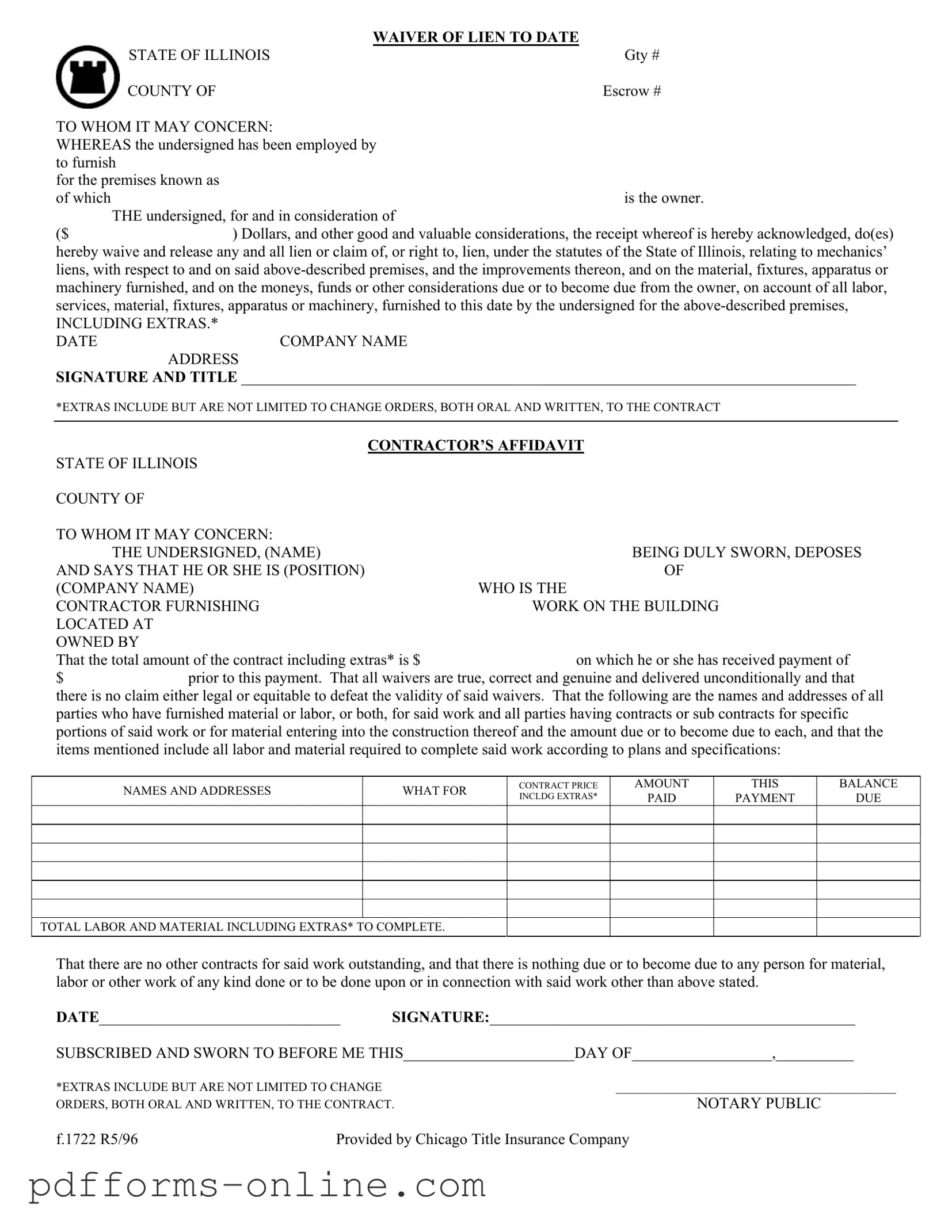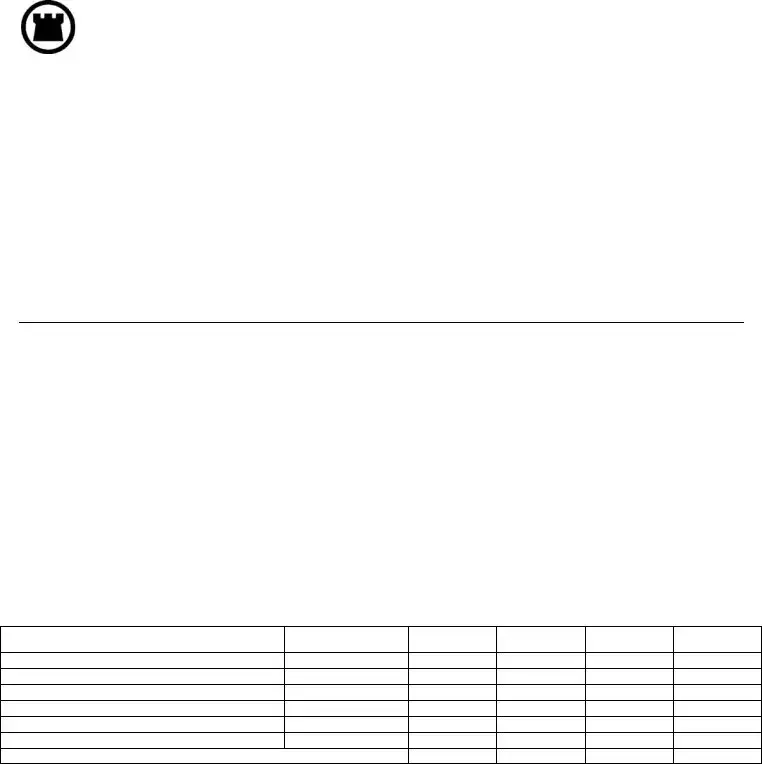The Chicago Title Waiver Format form shares similarities with the Construction Lien Waiver. Both documents serve to protect property owners from potential claims by contractors or subcontractors for unpaid work. The Construction Lien Waiver explicitly releases any claims against the property for labor and materials provided, ensuring that once payment is made, the contractor cannot later assert a lien. This mutual understanding fosters trust between parties involved in construction projects, as it clarifies financial obligations and prevents future disputes over payments.
Another document closely related to the Chicago Title Waiver is the Conditional Lien Waiver. This waiver is contingent upon the actual receipt of payment, meaning that if the payment does not occur, the waiver is void. Like the Chicago Title Waiver, it aims to protect the property owner while also safeguarding the contractor’s rights. This conditional nature allows for flexibility in transactions, as contractors can feel secure in their ability to claim a lien if payment is not fulfilled.
The Final Lien Waiver is also akin to the Chicago Title Waiver Format. This document is typically used at the end of a project, confirming that the contractor has received full payment and waives any future claims related to the project. Both waivers serve to finalize the financial relationship between the contractor and the property owner, providing peace of mind that all obligations have been met. The Final Lien Waiver often includes a declaration that no further claims will arise, reinforcing the completion of the contractual agreement.
Similarly, the Partial Lien Waiver functions in a manner akin to the Chicago Title Waiver. This document is utilized when a contractor receives a partial payment but still retains the right to claim a lien for the remaining balance. It provides clarity regarding what has been paid and what is still owed, thereby allowing for ongoing work without the risk of future claims. This type of waiver is particularly useful in long-term projects where payments are made in stages.
The Contractor’s Affidavit bears resemblance to the Chicago Title Waiver in that it provides a sworn statement regarding payments and claims. This affidavit confirms that the contractor has received payment for work performed and lists any outstanding claims. Like the Chicago Title Waiver, it serves as a protective measure for property owners, ensuring that all parties involved are aware of the financial status of the project and preventing potential disputes over unpaid work.
The Subcontractor’s Waiver is another document that aligns with the Chicago Title Waiver Format. This waiver is specifically designed for subcontractors who wish to relinquish their right to claim a lien against the property for work performed. It ensures that property owners are protected from multiple claims and provides assurance that all subcontractors have been compensated. This type of waiver is essential in multi-tiered construction projects, where various subcontractors may be involved.
In the realm of construction documentation, it is essential to understand the various forms that help ensure payment clarity and protection for property owners. Among these important documents, the Arizona Employee Handbook form is a noteworthy inclusion. Like other construction waivers, it aims to establish clear protocols and expectations. For businesses operating in Arizona, completing the Employee Handbook form is a vital step to ensure compliance and proper management of workplace standards. For comprehensive resources, you can access All Arizona Forms that streamline these processes.
The Statement of Account is also comparable to the Chicago Title Waiver. This document outlines the financial transactions between the contractor and property owner, detailing amounts paid and amounts due. While the Chicago Title Waiver focuses on waiving claims, the Statement of Account provides a comprehensive view of the financial relationship. Together, they create a clear picture of obligations and payments, fostering transparency in the construction process.
The Release of Lien form is another document that shares similarities with the Chicago Title Waiver. This form is used to formally release a lien that has already been placed on a property. By submitting this release, the contractor confirms that they have received payment and relinquishes any claim to the property. Both documents aim to clear any encumbrances on the property, allowing for smooth transactions and ensuring that property owners are not burdened by unresolved claims.
Lastly, the Mechanic’s Lien Notice is closely related to the Chicago Title Waiver. While the waiver serves to release claims, the notice informs property owners of potential liens that may be filed if payment is not made. This proactive approach allows property owners to address payment issues before they escalate. Both documents play critical roles in the construction process, ensuring that all parties are aware of their rights and responsibilities regarding payments and claims.

